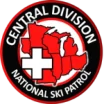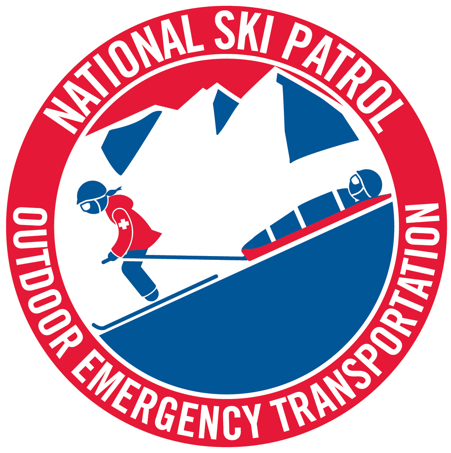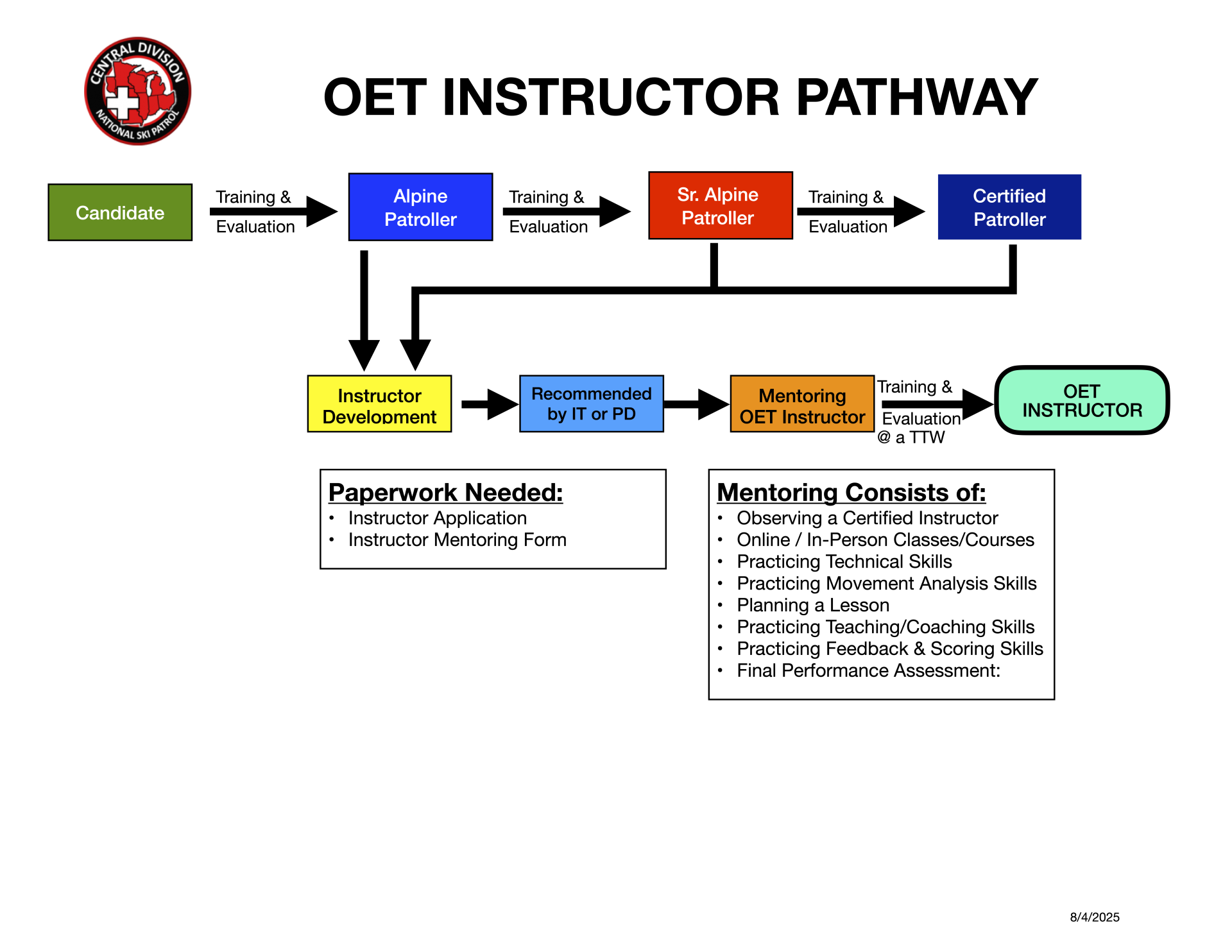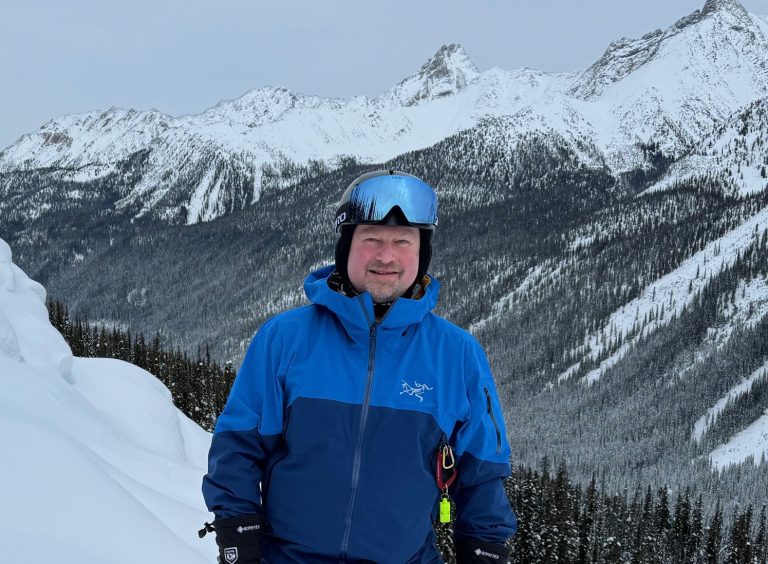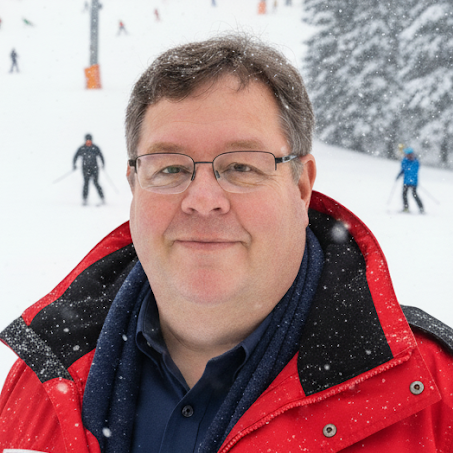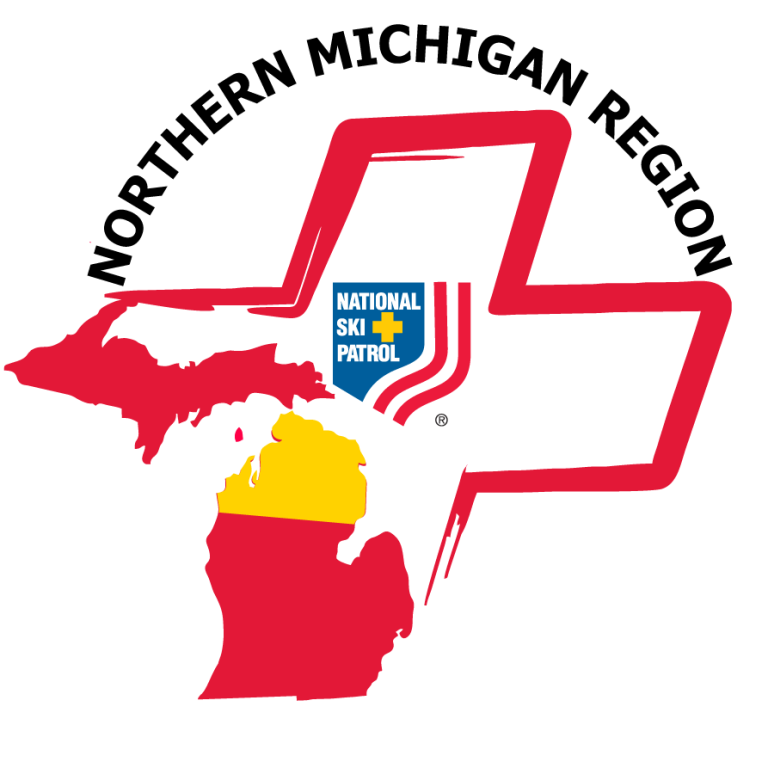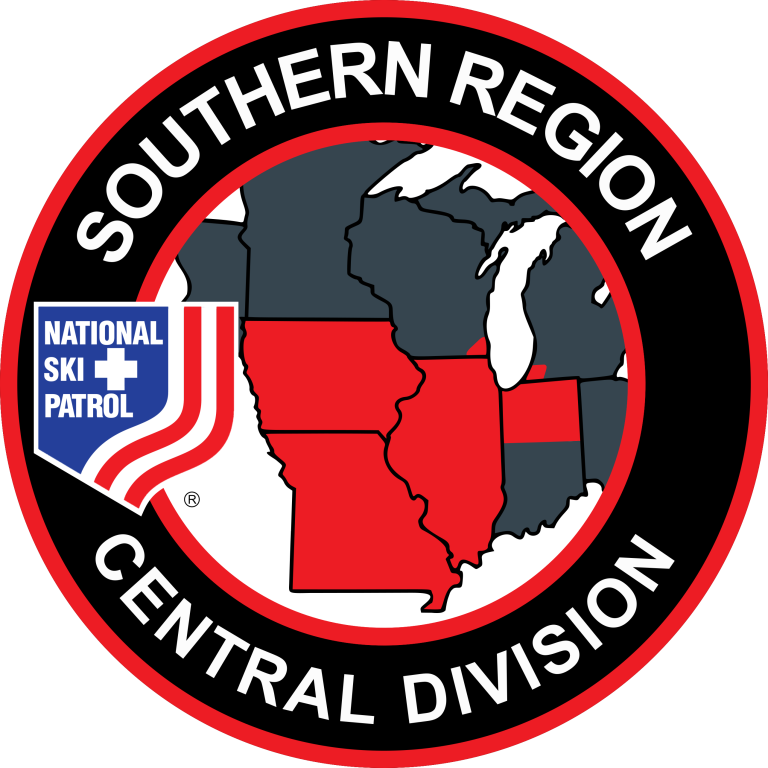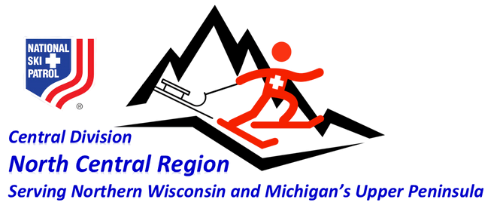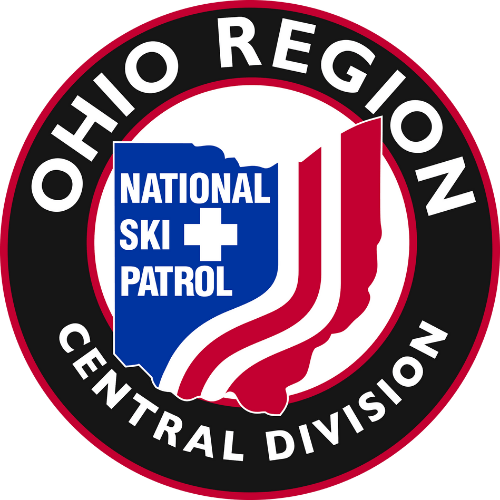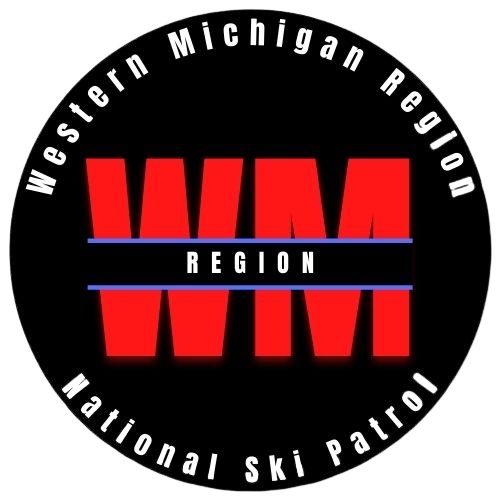The Central Division
Outdoor Emergency Transportation
Ride. Rescue. Respond: Outdoor Emergency Transportation (OET)
The Outdoor Emergency Transportation (OET) Program trains ski patrollers in the skills needed to safely navigate terrain, operate rescue toboggans, and support ski area operations. As a key part of NSP’s mission, OET ensures patrollers are ready to respond and keep outdoor recreation safe for all.
Sharpen Your Skills: OET Courses On and Off the Snow
The Outdoor Emergency Transportation (OET) Program offers a variety of courses, clinics, and workshops—each designed to build toboggan handling and transportation skills across alpine, telemark, and snowboard disciplines. Training is led by experienced ski patrol instructors in collaboration with local ski area management, blending classroom learning with hands-on, on-snow practice to ensure patrollers are prepared for real-world rescue situations.
Interested in Becoming an OET Instructor?
To become an OET Instructor, you must first be an Alpine Patroller. The pathway involves an instructor development phase, followed by a recommendation. The core of the process is mentoring, where you practice teaching skills and receive a final performance assessment. After completing the mentoring and a final training and evaluation, you become an OET instructor. Required paperwork includes an application and a mentoring form.
Region OET Advisors
Upcoming Oet Program Events
Courses and Workshops
OETS - Outdoor Emergency Transportation Skills
Objective: This course provides general training for patrollers of all skill levels, covering various aspects of toboggan handling and skiing/riding proficiency.
Content: Emphasizes developing key skiing/riding skills and their application to safe toboggan handling.
Prerequisites: Open to all NSP members. Participants should be familiar with basic skiing or snowboarding techniques.
Structure: Combines classroom instruction with on-hill practical sessions, focusing on skill development and application.
TREF – Toboggan Refresher
Objective: A mandatory annual course designed to refresh and recalibrate toboggan handling skills for all patrollers who may need to transport patients.
Content: Focuses on reinforcing the fundamental skills required for toboggan operations, including safe handling techniques, balancing, and braking on varied terrain.
Prerequisites: Participants must be credentialed, current alpine/Nordic patrollers. They should have completed previous OET training and be familiar with the basic toboggan handling procedures.
Structure: Conducted on the hill during business hours, with patrollers grouped for focused training. Completion is required early in the season.
SATE – Senior Alpine Toboggan Evaluation
Objective: Evaluates Senior Alpine candidates’ advanced toboggan handling skills on difficult and most difficult terrains.
Content: Candidates demonstrate proficiency in operating both loaded and unloaded toboggans from the front and rear positions. The evaluation includes navigating steep, groomed, and moguled slopes.
Prerequisites: Candidates must be enrolled in the Senior Alpine Program and recommended for evaluation by their patrol representatives or Senior Alpine Program coordinators. They must also have completed Division-specific skill sign-offs.
Structure: This on-snow evaluation is designed to test skills in real-world conditions. Multiple evaluators observe candidates to ensure they meet senior-level standards.
SAEE – Senior Alpine Skiing/Riding Evaluation
Objective: Provides an opportunity for Senior Alpine candidates to demonstrate their skiing/riding proficiency, focusing on contemporary techniques across various terrains.
Content: Evaluations include performing a variety of turn sizes on groomed, steep, and ungroomed slopes, along with carrying equipment on Senior-level terrain.
Prerequisites: Candidates must have completed the necessary skills sign-offs in the Senior Alpine Program and be recommended for evaluation by their patrol representative or coordinator.
Structure: Held on-snow, this evaluation assesses candidates under the observation of certified evaluators. The goal is to confirm their readiness for senior-level responsibilities.
TTW – Toboggan Trainers Workshop
Objective: Designed to enhance the skills of current and aspiring toboggan trainers, focusing on the safe and efficient handling of rescue toboggans.
Content: Provides an in-depth review and guided practice of toboggan handling procedures, emphasizing the development of training techniques for new instructors.
Prerequisites: Open to current or aspiring toboggan instructors. Participants should be familiar with basic toboggan handling and have a desire to train others.
Structure: The workshop includes both classroom instruction and on-hill practical sessions, with a recommended 1:4 instructor-to-student ratio.
STW – SnowSport Trainers Workshop
Objective: Enhances the teaching, assessment, and coaching skills of NSP SnowSport instructors, trainers, and evaluators.
Content: Focuses on the analysis of skiing/riding skills, development of prescriptive exercises, and application of these exercises to improve instruction and evaluation techniques. The workshop uses current PSIA/AASI methodologies.
Prerequisites: Open to current or aspiring ski, telemark, and snowboard instructors, trainers, and evaluators. Participants should have basic instruction skills and be approved by the Division OET Supervisor.
Structure: Includes classroom sessions and on-hill practice, with recommended instructor-to-student ratios of 1:4 to 1:7.
OET - Outdoor Emergency Transportation
- Objective – The TES is a thorough review and guided practice of toboggan handling procedures. It is designed to provide instruction and guided practice on proper usage and handling of alpine rescue toboggans. It is the intent to have experienced toboggan instructor trainers (ITs) and toboggan instructors present the proper and current techniques to properly handle an unloaded and loaded toboggan on suitable terrain. This program can and should be conducted at all alpine ski areas on a regular basis and should encourage hill-qualified patrollers to actively participate on a regular basis.
- Content – This program addresses the fundamental skills of properly utilizing alpine snow sport equipment. The course applies these skills to proper, efficient and safe handling of rescue toboggans. These fundamental skills include edging, rotation, pressure and balance and provide the foundation of skiing and snowboarding. The proper application of these skills provide the on-the-hill patroller with the ability to handle both front and tail responsibilities of the rescue toboggan with strength and confidence.
- Course prerequisites – Available to all patrollers qualified to run toboggans.
- Structure – Class size – Ideally there should be approximately 4-6 in a group of participants per toboggan and at least one instructor per group. The total size is limited to the equipment and instructors available, not to exceed the group sizes defined earlier and consistent with the local area’s policy on class sizes. Instructor/student ratio – The most effective ratio is consistent with the group size and number of toboggans. The ideal ratio is 1:4 of instructors to students, for one toboggan.
SES – SnowSports Enhancement Seminar
Objective: Aims to improve the skiing/riding skills of NSP members through guided practice and instruction using PSIA/AASI methodologies.
Content: Tailored to the needs of participants, this seminar covers the fundamentals of skiing/riding, including balance, edging, and pressure control. The course content is adaptable to different patroller groups.
Prerequisites: Participants need to be currently registered NSP members in good standing. Non-hill qualified NSP patrollers may participate, subject to event structure and host patrol policies.
Structure: Conducted primarily on the slopes, with class sizes generally capped at 10 participants per instructor. The seminar is not pass/fail but focuses on skill development.
Resources
To find the latest documents, please log in to your nsp.org account and search in the Document Library under the menu item Resources.
